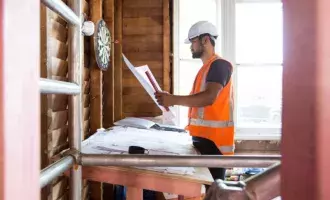Between the collapse of 83% of the UK’s department stores, consumers moving online and many high street shops now becoming obsolete, town centres are no longer the beating heart of local economies they once were.
The government has pledged £10bn in funding to help drive the regeneration of town centres through place-shaping, and the future role of local government will increasingly be to act as “the voice of a whole community and as ‘an agent of place’.”
Town centres have been retail-led for 20 to 30 years, but prior to the “identikit” high street trend – the usual selection of familiar stores on every major thoroughfare – town centres used to be places where people not only shopped, but lived, played and worked. Town centres were the hub of life – and well thought-out placemaking can revive this ethos of experience-based shopping in physical stores. There’s a pressing need for this kind of regeneration, or communities risk being left disconnected and characterless.
A House of Commons committee report, “Supporting our high streets after Covid-19”, states: “What is noteworthy is that since restrictions have lifted, the proportion of online purchases as a total of retail sales remains above pre-pandemic levels: 26.3% in October 2021 compared with 20.2% in January 2020.” Clearly, relying exclusively on brick-and-mortar retail to revive the high street is not an option.
Taking a layered approach
1. Public realm
For many councils, improvements in the public realm to create a vibrant communal space can be the first step toward regeneration, as this is the one area over which they’ve guaranteed, complete control. A new park, for example, provides green space for residents to exercise, meet up and socialise. It can also smarten up a location, help people feel safer – and the livelier, more inviting environment is more likely to attract investment. Public realm can also include events spaces, part of the reimagining of town centres as a place of unique entertainment.
2. Repurposing infrastructure
Shopping malls, in particular, are fast becoming white elephants in many town centres. Even as vaccine uptake increases and the pandemic recedes, customers’ propensity to spend long periods of time in enclosed spaces remains diminished.
Already we have seen empty stores being repurposed as vaccination centres, but in the long term defunct shopping centres and department stores can be converted for a multitude of other uses including medical, leisure or office space. As outpatient services are increasingly relocated from hospital premises into the community, authorities are struggling to find suitable spaces to accommodate them. These relocated services create opportunities to re-occupy underutilised retail space, generate footfall and stimulate the development of health clusters for services such as physiotherapy, opticians, mental health professionals and pharmacies.
With some adaptation and imagination, these obsolete spaces could be repurposed as housing for mixed and balanced communities – although the physical and structural constraints of doing so shouldn’t be underestimated. Others can simply be demolished to make way for something new, and the post pandemic slide in values makes this more feasible than ever before.
3. Public-private partnerships
A lack of economic viability and fragmentation of ownerships has the potential to be resolved through partnerships between local authorities and the private sector, working together for the common good. Where appropriate, the public sector can unlock fragmentation on high streets through their compulsory purchase powers to acquire multiple interests, assembling separately held facilities into one all-inclusive site and bringing whole-scale regeneration together.
Indeed, some authorities are already partnering with developers to placemake the town centre as a whole, masterplanning and building a strategy from the ground up. Brent Cross Town, for example, a development of Barnet Council in partnership with Argent Related, is a project that will continue to evolve well into the next decade.
The Brent Cross development, one of the biggest regeneration projects in Europe, includes 7,000 new homes, sports facilities including 50 acres of green parks and playing fields, and environmentally sustainable office space for 25,000 people. Not only will the regeneration create local jobs, some of the workspace is geared toward supporting small and medium enterprises, providing affordable non-residential floorspace as part of the local commercial strategy and nurturing creative commercial thinking.
Generating revenue without relying on retail – new engines of economic growth
Perhaps counter-intuitively, a lot of placemaking will actually require a reduction in the amount of available retail space. There just don’t need to be as many shops on the high street as before. From a socio-psychological perspective, empty shopfronts are a depressing view for the local community to encounter while going about their daily business. From a commercial point of view, reduced supply will increase demand for existing retail space, stimulating the local economy.
Placemakers will need to become more creative when it comes to reviving local economies. The value of open spaces such as plazas and town squares, which can bring people in by virtue of being appealing places for them to spend their time, is often underestimated – yet they generate footfall for adjacent businesses. Nick Searl of Argent says of an earlier development: “It’s quite a nebulous thing to define and achieve. Sometimes at King’s Cross when we ask people why they’re there, we get the best answer: ‘We just like hanging out here.’”
The pandemic has deprived people of experiences and it is this void that town centres can help fill. Spaces for leisure activities that generate revenue – cinemas, nightclubs, go-karting tracks etc, can be developed on high streets, subject to the availability of suitable space – and here, too, redundant shopping centres and department stores can be put to work. As an example, ‘competitive socialising’, which involves playing a sport or game, or undergoing a challenge while spending time with friends and colleagues, is a massively rising trend, and there is consumer demand for spaces such as golf or table tennis bars, darts clubs and escape rooms.
Another potential town centre use is last-mile logistics, the final link in the supply chain to the customer, which is the most expensive and challenging part of the supply chain. By their very nature, these hubs need to be in or around towns or cities where space is limited and costly. Some placemakers may choose to create more space for this type of logistics operation in their communities and reap the rewards.
While the City of London remains a buoyant commercial property market, property companies and investment funds are bolstering investment outside of the South-East by investing in regional offices in the North. Additionally, much new development is aimed at small and medium enterprises in set industry sectors, such as digital, to develop an area’s identity. Good tenant covenants can be found here, while creating jobs, increasing footfall and reinforcing the growth of some regional cities.
The importance of local identity
Before a local authority can begin the journey of placemaking, it is vital that it has a clear vision of the town’s identity. A strategic local authority is one with a plan. With town centres in competition with each other, you've got to be clear about what you stand for, about who you are – and build on your strengths.
Those authorities with a high level of ownership of place are better positioned to move quickly and succeed within the next five years. We need a shift in focus from traditional activities around delivering services to individual people, to serving places and communities.
One such example, Crawley in West Sussex, is ploughing £21.1 million of funding into reinventing itself as a cultural centre. The council is building up to 1,000 new flats and has declared a cultural quarter in the town centre to bring people into the area at night, working with theatre-makers, artists and other creatives to revive the night-time leisure industry. Crawley has also established an innovation centre for advanced engineering and digital technologies.
Location can be key to establishing a town’s identity. A new garden village is planned in South Ribble, Lancashire, comprising 1,300 new homes close to the government’s planned new £5bn National Cyber Force headquarters and GCHQ support centre. The placement of South Ribble’s new garden community development also makes it ideal for commuting to major regional centres such as Liverpool, Manchester, Preston and aircraft manufacturers at Salisbury and Wharton.
Cheltenham, meanwhile, is investing heavily in its identity as the Golden Valley: the UK’s answer to Silicon Valley. The planned Cyber Central development will cover two million square feet, including housing and support for social needs, and is due to open in 2023. The city’s proximity to 19 UK universities is hoped to engage young people and attract them to the burgeoning cyber industry.
The five must-haves for successful placemaking
- Be brave.
- Be distinctive. Decide what you stand for and what gives your town its identity.
- Begin with a plan.
- Galvanise community and stakeholder support and keep channels of communication open.
- Make a start, choose your team and ramp up momentum.
Local authorities like London Borough of Barnet (at Brent Cross) and Cheltenham are demonstrating that they don't need central government intervention to devise a local plan to serve people, places and communities. While central government can provide grants and support, ultimately each local authority has the ability to control its own destiny to some degree. Indeed, if they have a plan and a vision in place, they're already in a much better place to apply for government funding. The overwhelming message is for local authorities to take matters into their own hands and provide the vision for how their particular brand of regeneration will be implemented.







